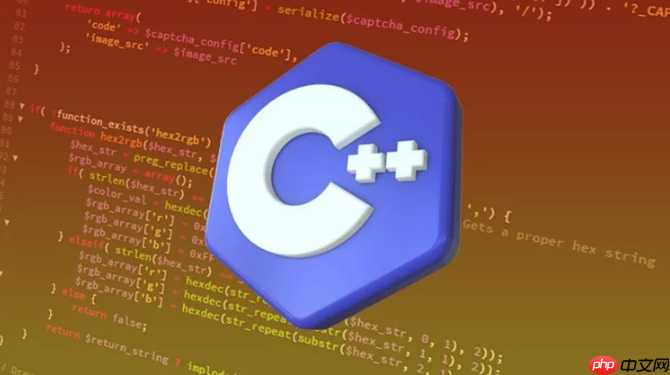使用C++数据库连接池可提升性能和资源利用率,通过复用连接避免频繁创建销毁的开销。推荐使用SOCI或基于MySQL Connector/C++封装连接池。示例中实现了一个线程安全的连接池类,包含连接获取与归还、初始化与释放、有效性管理等功能,结合std::mutex保证并发安全,使用时需注意连接检查、超时处理、资源释放及合理配置连接数。

在C++项目中使用数据库连接池,主要是为了提高数据库操作的性能和资源利用率。频繁地创建和销毁数据库连接会带来较大的开销,连接池通过预先创建并维护一组数据库连接,供程序重复使用,从而避免了这个问题。
原生C++标准库不提供数据库连接池功能,需要借助第三方库来实现。常用的库包括:
对于大多数项目,推荐使用 SOCI + 连接池封装 或基于 MySQL Connector/C++ 实现简单连接池。
下面是一个基于 MySQL Connector/C++ 的简易连接池实现思路:
立即学习“C++免费学习笔记(深入)”;
1. 引入头文件与依赖
#include <mysql_connection.h> #include <cppconn/driver.h> #include <cppconn/connection.h> #include <cppconn/statement.h> #include <thread> #include <mutex> #include <queue> #include <memory>
2. 定义连接池类
class ConnectionPool {
private:
sql::Driver* driver;
std::string url;
std::string user;
std::string password;
std::queue<sql::Connection*> connQueue;
std::mutex mtx;
int poolSize;
public:
ConnectionPool(const std::string& url, const std::string& user, const std::string& password, int size)
: url(url), user(user), password(password), poolSize(size) {
driver = get_driver_instance();
// 初始化连接队列
for (int i = 0; i < size; ++i) {
sql::Connection* conn = driver->connect(url, user, password);
connQueue.push(conn);
}
}
~ConnectionPool() {
while (!connQueue.empty()) {
sql::Connection* conn = connQueue.front();
connQueue.pop();
delete conn;
}
}
// 获取一个连接(自动加锁)
std::unique_ptr<sql::Connection> getConnection() {
std::lock_guard<std::mutex> lock(mtx);
if (connQueue.empty()) {
return nullptr; // 可扩展为等待或新建连接
}
sql::Connection* conn = connQueue.front();
connQueue.pop();
return std::unique_ptr<sql::Connection>(conn);
}
// 归还连接
void returnConnection(std::unique_ptr<sql::Connection> conn) {
std::lock_guard<std::mutex> lock(mtx);
if (conn && !conn->isClosed()) {
connQueue.push(conn.release()); // 释放所有权,放入队列
}
}
};3. 使用连接池执行查询
int main() {
ConnectionPool pool("tcp://127.0.0.1:3306/testdb", "root", "password", 5);
auto conn = pool.getConnection();
if (conn) {
std::unique_ptr<sql::Statement> stmt(conn->createStatement());
std::unique_ptr<sql::ResultSet> res(stmt->executeQuery("SELECT 'Hello'"));
while (res->next()) {
std::cout << res->getString(1) << std::endl;
}
pool.returnConnection(std::move(conn)); // 使用完归还
} else {
std::cerr << "No available connection!" << std::endl;
}
return 0;
}使用C++数据库连接池时,注意以下几点:
基本上就这些。连接池的核心是“复用+管理”,虽然C++没有内置支持,但通过封装完全可以实现高效稳定的数据库访问。
以上就是c++++怎么使用数据库连接池_c++数据库连接池使用方法的详细内容,更多请关注php中文网其它相关文章!

c++怎么学习?c++怎么入门?c++在哪学?c++怎么学才快?不用担心,这里为大家提供了c++速学教程(入门到精通),有需要的小伙伴保存下载就能学习啦!

Copyright 2014-2025 https://www.php.cn/ All Rights Reserved | php.cn | 湘ICP备2023035733号